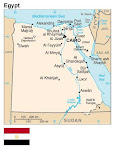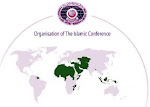 India began the countdown Monday to the launch of its first unmanned mission to the moon that will mark a giant catch-up step with Japan and China in the fast-developing Asian space race.The lunar-orbiting spacecraft, Chandrayaan-1, is scheduled to blast off aboard an Indian-built rocket at 6:20 am (0050 GMT) on Wednesday from the Satish Dhawan Space Centre in Sriharikota on India's southeastern coast. "Everything is going perfectly as planned," the centre's associate director M.Y.S. Prasad told AFP from Sriharikota, 80 kilometres (50 miles) north of Chennai, after the official countdown began in the early hours of Monday.The launch is a major step for India as it seeks to keep pace with regional space competitors Japan and China. Last month, China became only the third country in the world to independently carry out a space walk.All three countries have eyes on a share of the commercial satellite launch business and also see their space programmes as an important symbol of international stature and economic development.The Chandrayaan-1 is being sent on a two-year, 80-million-dollar mission to provide an in-depth map of the mineral, chemical and topographical characteristics of the moon's surface.India first staked its claim to a share of the commercial launch market by sending an Italian satellite into orbit in April last year. In January, it launched an Israeli spy satellite despite Iranian protests.India's first successful launch of a domestic satellite by a home-built rocket came in 1980, when it was less preoccupied with reaping commercial benefits and more with harnessing space technology to boost deficient communications and broadcasting facilities.G.K. Menon, former head of the Indian Space Research Organisation, said the Chandrayaan-1 mission reflected the "remarkable success" of India's domestic programme."After this, the next step will be sending a manned mission to the moon for which trials have already begun,"Menon said.India still has a long way to go to catch up with China which, together with the United States, Russia and the European Space Agency, is already well-established in the commercial launch sector.Chinese officials have spoken of a manned mission to the moon in the future, after following the United States and the former Soviet Union last month by carrying out a space walk, although a more immediate goal is the establishment of an orbiting space lab.Beijing's long-term ambition is to develop a fully-fledged space station by 2020 to rival the International Space Station, a joint project involving the United States, Russia, Japan, Canada and a clutch of European countries.Japan has also been boosting its space programme and has set a goal of sending an astronaut to the moon by 2020.Japan's first lunar probe, Kaguya, was successfully launched in September last year, releasing two mini-satellites which will be used to study the gravity fields of the moon among other projects.As well as the commercial ramifications, the development of a space race in Asia has security implications, with the potential for developing military applications such as intelligence gathering and space-based weapons.Earlier this year, Japan scrapped a decades-old ban on the military use of space, hoping to remove any legal obstacles to building more advanced spy satellites.India started its space programme in 1963, developing its own satellites and launch vehicles to reduce dependence on overseas agencies.Chandrayaan-1, with a launch weight of about 1.3 tonnes, is shaped like a cuboid or rectangular prism and carries 11 payloads-five from India and others from abroad.The rocket, India's Polar Satellite Launch Vehicle, has so far launched 29 satellites.
India began the countdown Monday to the launch of its first unmanned mission to the moon that will mark a giant catch-up step with Japan and China in the fast-developing Asian space race.The lunar-orbiting spacecraft, Chandrayaan-1, is scheduled to blast off aboard an Indian-built rocket at 6:20 am (0050 GMT) on Wednesday from the Satish Dhawan Space Centre in Sriharikota on India's southeastern coast. "Everything is going perfectly as planned," the centre's associate director M.Y.S. Prasad told AFP from Sriharikota, 80 kilometres (50 miles) north of Chennai, after the official countdown began in the early hours of Monday.The launch is a major step for India as it seeks to keep pace with regional space competitors Japan and China. Last month, China became only the third country in the world to independently carry out a space walk.All three countries have eyes on a share of the commercial satellite launch business and also see their space programmes as an important symbol of international stature and economic development.The Chandrayaan-1 is being sent on a two-year, 80-million-dollar mission to provide an in-depth map of the mineral, chemical and topographical characteristics of the moon's surface.India first staked its claim to a share of the commercial launch market by sending an Italian satellite into orbit in April last year. In January, it launched an Israeli spy satellite despite Iranian protests.India's first successful launch of a domestic satellite by a home-built rocket came in 1980, when it was less preoccupied with reaping commercial benefits and more with harnessing space technology to boost deficient communications and broadcasting facilities.G.K. Menon, former head of the Indian Space Research Organisation, said the Chandrayaan-1 mission reflected the "remarkable success" of India's domestic programme."After this, the next step will be sending a manned mission to the moon for which trials have already begun,"Menon said.India still has a long way to go to catch up with China which, together with the United States, Russia and the European Space Agency, is already well-established in the commercial launch sector.Chinese officials have spoken of a manned mission to the moon in the future, after following the United States and the former Soviet Union last month by carrying out a space walk, although a more immediate goal is the establishment of an orbiting space lab.Beijing's long-term ambition is to develop a fully-fledged space station by 2020 to rival the International Space Station, a joint project involving the United States, Russia, Japan, Canada and a clutch of European countries.Japan has also been boosting its space programme and has set a goal of sending an astronaut to the moon by 2020.Japan's first lunar probe, Kaguya, was successfully launched in September last year, releasing two mini-satellites which will be used to study the gravity fields of the moon among other projects.As well as the commercial ramifications, the development of a space race in Asia has security implications, with the potential for developing military applications such as intelligence gathering and space-based weapons.Earlier this year, Japan scrapped a decades-old ban on the military use of space, hoping to remove any legal obstacles to building more advanced spy satellites.India started its space programme in 1963, developing its own satellites and launch vehicles to reduce dependence on overseas agencies.Chandrayaan-1, with a launch weight of about 1.3 tonnes, is shaped like a cuboid or rectangular prism and carries 11 payloads-five from India and others from abroad.The rocket, India's Polar Satellite Launch Vehicle, has so far launched 29 satellites.India’s Maiden Moon Voyage Set To Lift Off
http://www.breitbart.com/article.php?id=081020120358.huw2dw9g&show_article=1
As in the days of Noah....






















































































.bmp)

























.bmp)